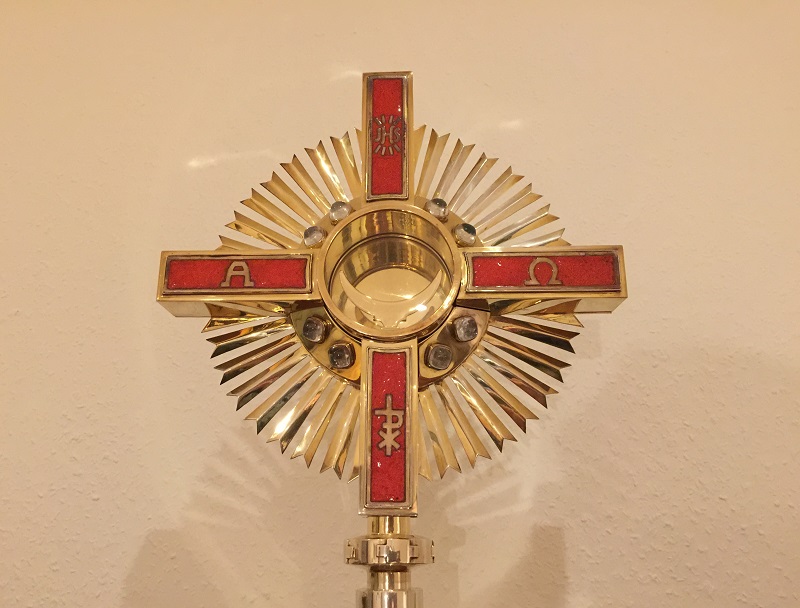The parish of “Pope John XXIII” in Krefeld owns for its Catholic liturgy a wonderful one monstrance from the middle of the last century. Unfortunately, in the meantime the so-called “Lunula”, i.e the crescent-shaped bracket in the center of a monstrance for the presentation of the consecrated Host lost. Therefore, we received the request from the coordinator of the church council and the pastor in Krefeld to organize a new lunula for this beautiful monstrance.
The representatives of the church council finally decided to purchase a ready-made host holder and fit it into the existing monstrance. Fortunately, we were able to find a lunula that corresponds exactly to the historical monstrance in terms of size, shape and the color of the gilding.

We finally made in our studio a custom-fit base for the stable accommodation of the new host holder, with which the lunula can be easily inserted into the conical rail inside the monstrance during the service. Finally, the new base was polished to a high gloss and plated in 24 carat yellow gold.

The end result was so convincing that probably nobody will recognize at first or even second glance 😉 that the monstrance and lunula no longer form a historical unit.
But the most important thing: This beautiful monstrance no longer has to wait in vain in the sacristy to be used in the mass and can finally be presented to the faithful again during the liturgy together with the Host in all its splendor and beauty.


